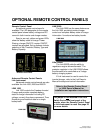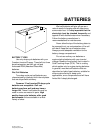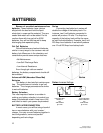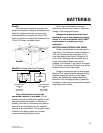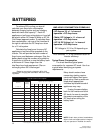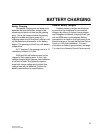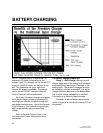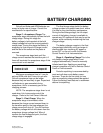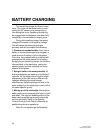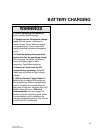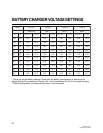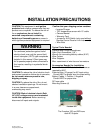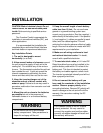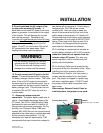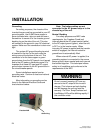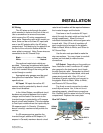
Part No. 90-0123-00
Libertycombi.p65 10/26/98
18
BATTERY CHARGING
The equalizing charge is a timed, 8-hour
cycle. The cycle can be ended early by inter-
rupting the AC power to the charger at any
time during the cycle. Equalizing should only
be engaged after the batteries have been fully
charged by a normal battery charging cycle.
During this equalizing stage, the battery
voltage will increase to the equalize voltage.
This will cause the battery bank to gas
profusely and will accomplish the following:
1. Removal of residual sulfate. Each time a
battery is cycled (discharged and charged), a
small amount of sulfate is left on the plates.
Over time, this gradual build-up of sulfate will
compromise the performance of the battery.
By applying an equalizing charge, the sulfate is
returned back to the electrolyte, raising the
specific gravity and fully exposing the active
material of the plates.
2. Bring all cells to the same potential. All
lead-acid batteries are made up of individual 2
volt cells. As the battery bank is cycled, slight
differences in the cells result in different cell
voltages, affecting the overall charge
effectiveness. Equalizing brings all cells to the
same voltage and the electrolyte in each cell to
the same specific gravity.
3. Mixing up of the electrolyte. Electrolyte in
battery cells tend to separate into layers of acid
and water. The vigorous bubbling action of the
battery during equalizing serves to physically
mix the electrolyte. Refer to the Remote
Control Panel and Link Owner’s Manuals for
additional cautions on equalizing.
Note: Do not equalize gel cell batteries.



